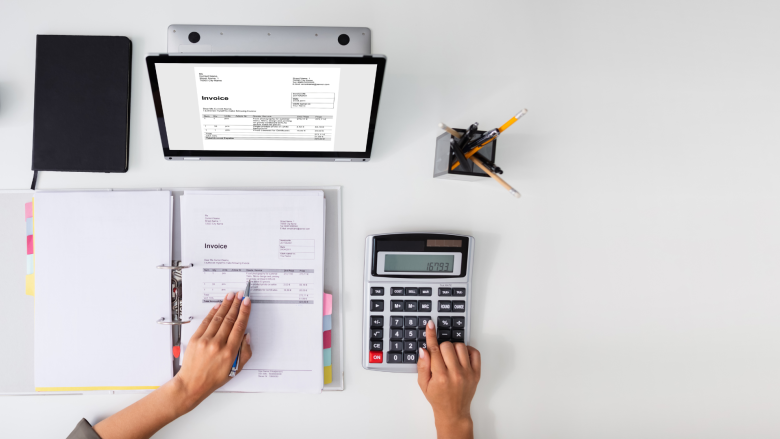Setting up an accounting system for your business is an important step for any entrepreneur or small business owner. A good accounting system not only helps you track your income and expenses, but it also helps you comply with tax regulations, gain insight into your financial performance, and make informed decisions. For a beginner, the process can seem daunting, but with the right guidance, it can be simple and achievable. This article provides a complete guide to setting up an accounting system for your business. It covers everything from choosing the right software to organizing your financial data and understanding the basics of accounting. By following these steps, you can create a solid foundation for managing your business finances and achieving long-term success.
Understand the Importance of Accounting Systems
The accounting system is the backbone of a company’s financial management. It allows you to monitor cash flow, analyze expenses, and generate financial statements that provide a complete picture of your business’s health. Without a structured accounting system, it’s easy to forget transactions, miss tax deadlines, or make unwise financial decisions. Plus, keeping accurate and up-to-date financial records is essential for securing loans, attracting investors, and meeting legal obligations. Whether you’re running a small startup or a large corporation, an effective accounting system is essential for managing money and achieving your business goals.
Choosing the Right Accounting Software
The first step in setting up an accounting system is choosing the right software. There are a variety of accounting software options available, ranging from simple tools for small businesses to comprehensive systems for larger enterprises. When choosing software, consider variables such as ease of use, scalability, functionality, and price. Beginners can use QuickBooks, Xero, and FreshBooks for their simple interfaces, powerful features, and cloud-based accessibility. Find software that handles invoicing, expense tracking, payroll, and financial reporting. Mobile apps let you manage your finances on the go, across multiple platforms. The right software can save you time and simplify your accounting tasks.
Create Your Chart of Accounts
The general ledger organizes financial transactions into assets, liabilities, equity, revenues, and expenses and is the foundation of your accounting system. Cash, Receivables, and Office Supplies are subaccounts for each category. Accurate financial reporting and analysis require a well-structured general ledger. The standard chart of accounts in most accounting software can be customized to your organization. It includes accounts for inventory, sales tax, and loan repayments. A well-organized chart of accounts makes it easy to track transactions and report financial information.
Recording Revenues and Expenses
Your accounting system depends on accurate recording of revenues and expenses. Revenues come from sales, services, and other business activities, while expenses include rent, utilities, wages, and supplies. Record transactions in your accounting software and categorize them accurately. Customer payments should be recorded as revenue and allocated to the appropriate revenue accounts. When you pay vendors, record the expense under utilities or office supplies. Balancing your finances and bank statements regularly can help you identify problems and maintain accuracy. Keep detailed, organized records to keep track of your finances and make informed decisions.
Invoice/Payment Management
If your organization provides services to customers, your accounting system should include invoicing and payment processing. Use your accounting software to create and send professional invoices, manage payment statuses, and send late payment reminders. Invoices should include a description of the goods, quantity, and due date. Payment terms are 30 days net. PayPal and Stripe simplify online payment processing for businesses. More efficient invoicing and payment management improves cash flow and customer satisfaction by streamlining the process.
Tracking and Managing Payroll
For employees, payroll is essential to your accounting system. Payroll involves calculating wages, withholding taxes, and paying your employees on time. Many accounting software programs include payroll functionality or integrate with third-party payroll systems. These systems automate calculations, payroll, and tax filing, reducing errors and ensuring compliance with labor laws. To avoid fines, you need to properly record your employees’ hours, wages, and benefits, and stay up to date on tax requirements. Paying your employees accurately and on time builds trust and morale.
Understand the Basics of Financial Statements
Financial statements help you evaluate business performance and make strategic decisions. The income statement, balance sheet, and cash flow statement are important financial statements. An income statement shows revenue, expenses, and net income for a given period. The balance sheet shows your company’s assets, liabilities, and equity. The cash flow statement provides insight into liquidity and operational efficiency by tracking an organization’s cash flows. Learn these statements by heart and generate them regularly using your accounting software. Understanding your financial accounts can help you spot trends, troubleshoot problems, and plan for the future.
Storing and Organizing Financial Data
A successful accounting system requires that you manage and store financial data properly. Keep digital copies of invoices, receipts, bank statements, and tax returns safe and easy to store. Use cloud storage to back up and protect your data. Implement a filing system to organize documents by type and date for easy retrieval. Regularly review and archive old documents to clean up your system. Organized financial data simplifies accounting tasks and ensures regulatory and tax compliance.
Tax Compliance
Failure to comply with tax laws can expose you to fines and legal issues. That’s why tax compliance is essential for your accounting system. Learn more about corporate tax dates, filing requirements, and deductions. Use accounting software to track taxable income, calculate sales taxes, and file tax returns. To maximize deductions and accuracy, consult a tax professional. Set aside enough money throughout the year for your tax payments so you don’t have to worry about last-minute tax payments. Complying with tax laws can help you avoid costly mistakes and grow your business.
Seek Professional Help when Needed
With the right tools and experience, you can set up and manage your accounting system, but professional support may be needed. For complex tasks such as tax planning, financial analysis, and audits, accountants and bookkeepers can help. Hire an expert to save time, reduce errors, and stay compliant. Even if you manage your accounting system yourself, a professional review can provide insight and improvements. Seek support to ensure your accounting system continues to run smoothly.
Conclusion
Setting up an accounting system for your business is essential to financial management and business success. Choose the right software to organize your general ledger accounts and accurately record your income and expenses. This will help you lay a solid foundation for your financial management. Efficient invoicing, payroll, and financial reporting improve performance monitoring and decision-making. By complying with tax regulations and seeking professional guidance, you can ensure that your accounting system is accurate and reliable. With a good accounting system, you can confidently grow your business and achieve your goals.
FAQs
1. Which accounting software is best for small businesses?
QuickBooks, Xero, and FreshBooks are popular solutions for small businesses, with simple interfaces and key features.
2. How do I create a chart of accounts?
Start with the default general ledger in your accounting software and customize it to fit your business.
3. What financial statements should I prepare regularly?
To assess the financial performance and health of your business, you need a profit and loss statement, a balance sheet, and a cash flow statement.




